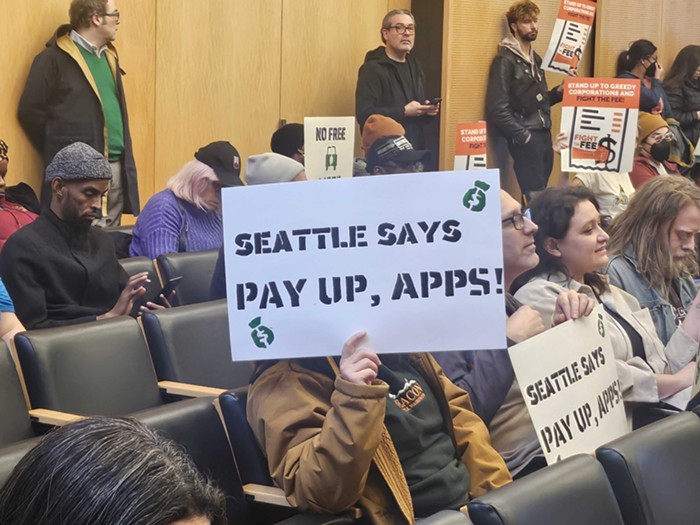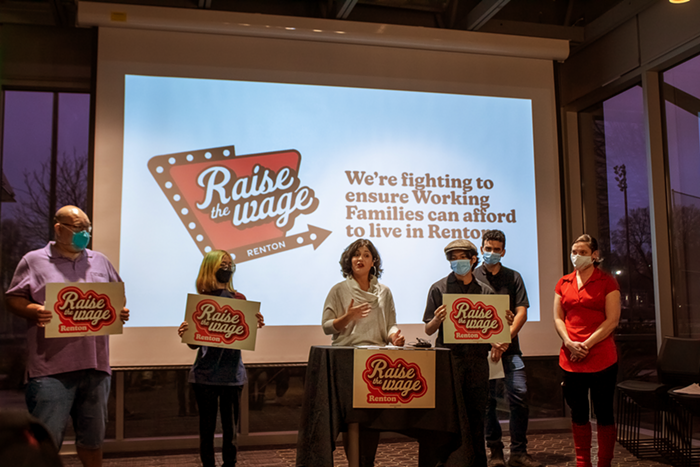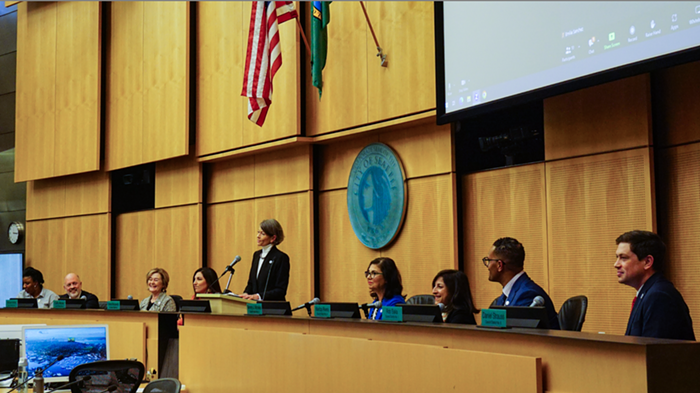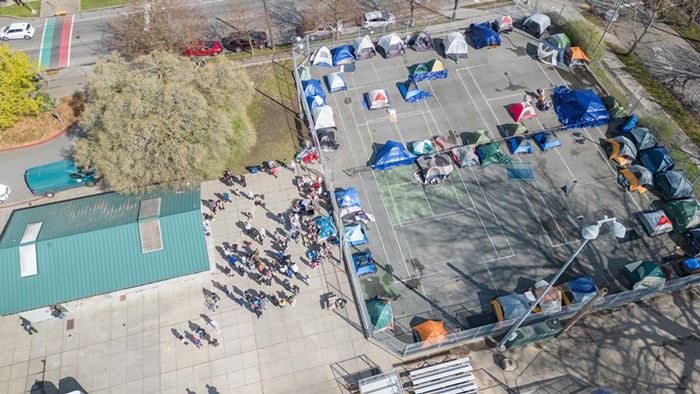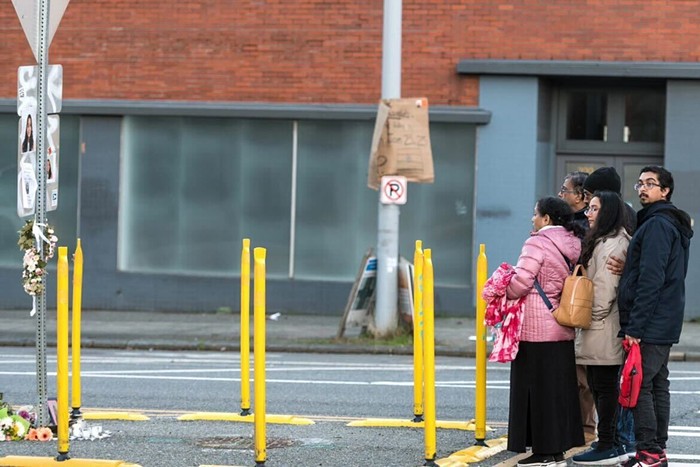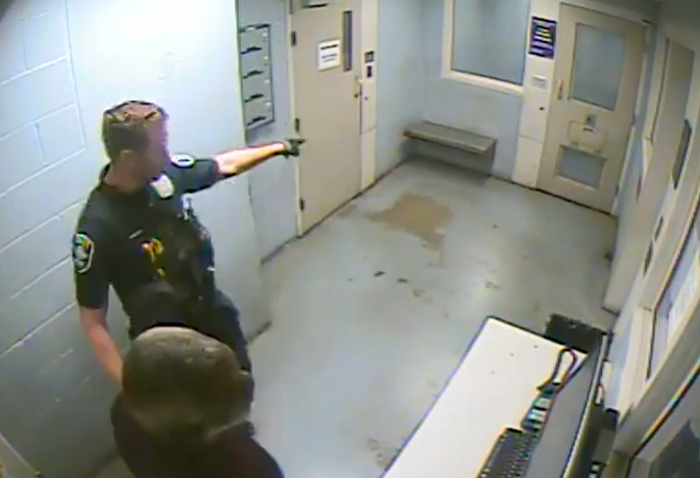If a nerdy young woman, representing the U.S. government, came to your front door asking "confidential" questions about your drug use, would you invite her in?
The National Household Survey on Drug Abuse depends on it. The survey is conducted door-to-door, nationwide, during August and September. Of the 370,000 people screened, 30,000 make it to the final interview process. The youngest participants are 12 years old. The survey takes one year to process before it's presented to the public in mid-August. It's designed by the Department of Health and Human Services (DHHS), as a kind of national drug scorecard to help the feds divvy up dollars for local programs.
DHHS' random scientific census method also helps the government get a pulse on what people in the country are smoking, popping, injecting, and drinking.
A close look at the government survey might also explain why the nation's drug policy is so askew. Luckily, I got a pretty close look. My house was chosen by DHHS to participate in the study, and after weeding out the freaks—they chose my roommate Corey Candice over me—the surveyor, a preppie white girl from Bellevue, arrived at our house in the Central District to interview Candice. I, dutiful reporter, then surveyed my roommate.
"I'd like to know what that survey had to do with reality." Candice says. "They didn't ask me about substance abuse in my neighborhood, my family, the people I work with. They're asking the wrong questions. Or maybe they don't really want to know the truth."
Proof of the pomp and pony show surrounding the National Household Drug Survey was displayed on CNN just last week. That's when White House National Drug Policy Director Barry McCaffrey and DHHS Secretary Donna Shalala announced the results of last year's survey: "Youth Drug Use Decreases." McCaffrey gave kudos to morality-fortification troops like parents, teachers, and ministers.
A closer reading of the survey on the Substance Abuse and Mental Health Services Administration (SAMHSA) website, however, undermines McCaffrey's gleeful findings.
Illicit drug use actually increased for young adults ages 18-25 during 1998. The smoking rate steadily increased in young adults 18-25 as well. Alcohol binge drinking rates remained at a 10-year standstill. No distinction was made between age-appropriate use and abuse, and no correlation was made between adult and youth abuse patterns. Everything was lumped together as continued fodder for a "let's stay tough on drugs" policy.
Joe Gustin of SAMHSA admitted that there are serious flaws with the study. He says interviewing kids is difficult, unless an interviewer can separate the kids from their parents. He's also aware of other hazards of under-reporting, and the lack of representation for homeless people.
Gustin stressed the high quality of scientific methods employed in the survey, as well as its high costs. Next year the survey will triple to 90,000 participants in order to acquire better state-centered statistics.
Judging from my roommate's reaction, however, it seems this year's National Household Survey on Drug Abuse is going to get it wrong again.
Corey is gloating about the fact that the computer chose her for the survey over me. Then she gets serious.
"I can't remember if they asked any questions about crystal meth," she says. She doesn't think they asked anything about over-the-counter prescriptions. What surprised her was that it was impossible to approve of illicit drug use. The only choices were negative or no comment. Most of the questions focused on her own drug use, her attitude about drugs, and what her neighbors thought.
"There was no way for me to talk about the crystal meth lab that got busted two months ago on the corner, the drug deals down the street, the 40-ouncers on the front lawn."
For a more accurate look at the Seattle drug scene, I checked in with Ron Jackson, Executive Director of Evergreen Treatment Services, primarily a methadone treatment center. Jackson compiles drug use trends for Seattle and King County with other professionals under the auspices of the Department of Public Health. These reports are gathered from medical examiners, emergency rooms, treatment centers, arrest and conviction reports, border patrol data, and from cost and quality information about the drugs themselves.
The summary 1998 Recent Drug Abuse Trends Report for King County notes increased marijuana and hallucinogenic drug use among schoolchildren. The 1998 Washington Student Survey also noted a rise in marijuana use, especially among 10th and 12th graders. Other notable details include a resurgence in cocaine after years of decline, and an increase in the number of deaths from heroin. Methamphetamine use increased 850 percent in King County from 1992-1998, predominantly among white males. Statewide methamphetamine use went up 1000 percent in that same period.
In this context, the real test of the National Household Drug Survey is whether appropriate funding is coming to Seattle. According to Norma Jaeger, Section Chief for Treatment and Rehabilitation Services in King County, "Money doesn't follow trends. But it sometimes chases trends." Jaeger says treatment in Seattle and King County is only available to 20 percent of the people who need it.
